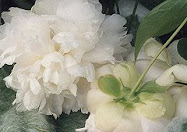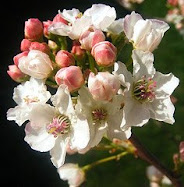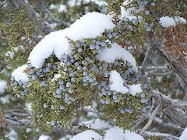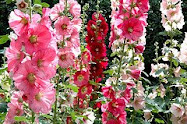 In the early 1950s, a young German biodynamic farmer/researcher named Maria Thun decided to investigate the legendary belief present in many agro-cultures all the way back to Babylonian times, that the phases of the moon affect gardens and crops. She began by sowing underground crops (potatoes, carrots) according to lunar cycles. Based upon initial results which demonstrated the powers of the moon, over the next several decades Ms. Thun extended her experimentation to many other kinds of plants.
In the early 1950s, a young German biodynamic farmer/researcher named Maria Thun decided to investigate the legendary belief present in many agro-cultures all the way back to Babylonian times, that the phases of the moon affect gardens and crops. She began by sowing underground crops (potatoes, carrots) according to lunar cycles. Based upon initial results which demonstrated the powers of the moon, over the next several decades Ms. Thun extended her experimentation to many other kinds of plants.Her body of research and that of other agricultural scientists who followed her lead documents that the moon and other heavenly bodies and events do indeed impact earthly plant growth. Understanding how and why this is so allows gardeners to enlist the divine intervention of the heavens for the good of their enterprises, and to avoid incurring the heavens' wrath (as it were) upon their gardens.
The orbit of the moon acts upon and moves the rise and fall of tides, the air currents that flow constantly over the earth's surface, rainfall and drought and thunderstorm occurrences. Tides in seas, lakes, rivers, and the waters contained in and beneath the soil, follow the same daily cycle as the rising or subsiding moon. Most of earth's rainfall comes just after a full moon. For the garden, this means that phases of a full moon are most auspicious for speeding germination of seeds in the soil, as well as survival and success of tender young plants, particularly during periods of drought. The waxing (increasing) moon greatly assists the ascendance and absorption of moisture.
Likewise, periods of a new or waning moon are generally the worst times to start seeds or seedlings, and can blight their prospects. If, like me, you have ever bedded in seeds and young plants assiduously, watered them religiously, and seen nary a sprout nor healthy, dancing plant yielded by your labors, perhaps the explanation may be that it was just the wrong time of the month for Mother Earth. A time when she had, so to speak, a celestial headache.
In addition to the phase of the moon, the moon's placement in the sky and in constellations also determines whether the heavens will be smiling upon and lending a helping hand to the gardener, or tossing down scowls of bad weather and curses of ill-starred energy. Plants carry electrical charges, as do all life forms, which can promote or depress growth. Because of this, plants are extremely sensitive to fluctuations in energy fields, to changes in earth's air currents, and to alterations in the air's ionization caused by thunderstorms. Plants actually favor and respond best to the moon's placement within constellations depending upon the type of plant and the physical/astronomical environment its type requires in order to go forth happily and flourish.
Underground root crops, for example (carrots, garlic, potatoes, onions), like to be planted when the moon is dallying within one of the earth signs of the astrological calendar, those being Taurus, Capricorn and Virgo. Above-ground leafy plants (lettuce, celery, alfalfa, chard) enjoy the best chance of settling in for a productive residence if planted when the moon visits a water sign, Pisces, Scorpio or Cancer. Flowers (flighty creatures) want to get started when the moon is ruled by an air sign, Gemini, Libra or Aquarius. And seed plants (apple, tomato, nuts, pomegranates, raspberries) prefer to get their game on with the moon headquartered in a fire sign, Aries, Leo or Sagittarius.
The constellations also can aid or hinder other garden undertakings. If you're thinking of attacking, chopping out and attempting to defeat weeds or other unwanted growth in the garden, your efforts will be most effective when the most barren signs of Gemini, Leo and Virgo rule the heavens. Harvesting ought to take place during the dark of the moon (from last quarter to new moon) in the signs of Aries, Aquarius or Sagittarius. To gather fruit, grain or vegetables during water signs may invite unwelcome decay or sprouting. If there's a shrub or tree that's getting a little too big for its britches, pruning done in the signs of Aries or Sagittarius will discourage new growth. If pruning is employed with a view to stimulating and bringing on new growth, put the secateurs to work in the signs of Cancer or Scorpio between the full and new moons, as this is when wounds heal best (also good to know if you're planning a spot of elective surgery). Maria Thun publishes an annual biodynamic planting and sowing calendar with very detailed cosmological planting guidelines, and these can be located by searching her name at www.alibris.co.uk.
The writers Vita Sackville-West and Harold Nicholson took the garden/moon dialogue to another level by creating a moonlight garden at Sissinghurst Castle, meant to be visited and enjoyed by the light of the moon rather than in daytime and sunlight. Moonlight gardens feature white, cream or yellow flowers, and those which look and smell their best under the dewy touch of nighttime and the gentle beams of the moon – calla lilies, pale roses, jasmine tobacco, clematis, four o'clocks, stocks, snow-on-the-mountain – pretty much any plant with vanilla shades of flowers. Silvery, mint and sage foliage, such as found on lavendar, lamb's ears and dusty miller, also look magical by moonlight, as does white-toned tree bark.
What underpins the overall horticultural science of being guided by the moon and stars really comes back to a fundamental principle of good gardening, namely, don't fight nature. Flowers wish to unfurl, corn strives to bound upward, grasses are bent upon growing long tresses to toss in the winds if the gardener but abides by the ancient wisdom of heeding the earth's tethers to her heavenly consorts. Thus can the moon become your garden, and the gardener become, in the words of Reginald Farrer, “the reverent servant of nature, not her truculent, wife-beating master.”









No comments:
Post a Comment